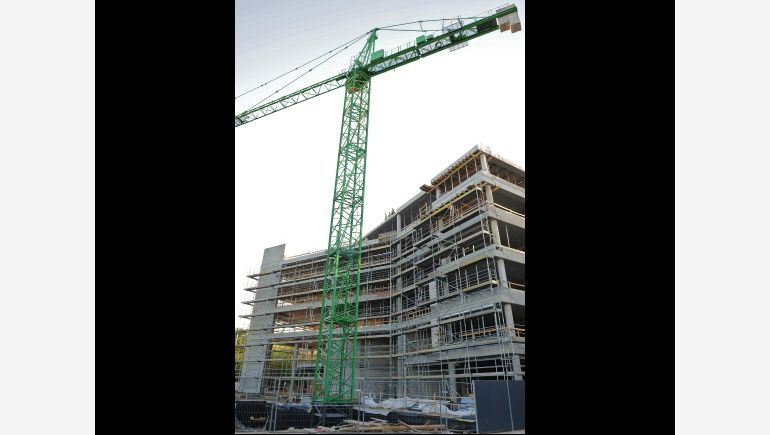No one will deny the fact that modern construction industry is changing and developing. Not long ago, the words “prefabricated elements” carried negative connotations with lower quality and system-built buildings from the 70’s and 80’s. Now the situation is changing. Contractors, looking for the most effective construction materials, more and more often choose reinforced concrete and prestressed concrete. What are these products?
At the beginning it is important to stress that Polish word „żelbeton” is an incorrect one. It suggests concrete, made from gel, when in reality the material is a mix of concrete and steel. A framework, made from steel, is put into formwork in the place where the element is put on the construction site or in a framework in prefabricated elements factory. Then, concrete mix is poured over. After the concrete gains needed durability, we get an element in which the steel carries tensile stress and the concrete carries compressive stress. Cooperation of the materials is based on the adhesion between concrete and steel and a similar value of coefficients of thermal expansion – explains Przemysław Borek, CEO of Pekabex-Bet company which for over 40 years has been specialising in building in Poland, using reinforced and prestressed prefabricated elements – prestressed concrete contains reinforcement in a form of wires or strings made from high quality steel. Before pouring concrete over them, the wires are maximally stressed. After the concrete gains needed durability, the wires are gradually destressed. As a result of that operation, force operating on wires is transferred to concrete through friction.
What are the assets of reinforced concrete? It is fireproof, resistant to static and dynamic load, it also allows for a free shaping of the elements. Reinforced concrete is also largely resistant to corrosion. Prestressed concrete is often used in the production of ceilings, beams, lintels, spans, girders and other construction elements. It allows for them to be smaller, at the same time raising their carrying capacity. Practical use of reinforced concrete constructions is accessibly described in „Vademecum – Zielona Ideologia a Praktyka” publication, prepared by e-biurowce.pl team.
Przemysław Borek stresses: The words „ prefabricated elements” may bring to mind something of lesser quality, but after knowing more of the technology, the opinion changes drastically. It is enough to list the most important assets for the investor. Choosing reinforced concrete and prestressed concrete prefabricated elements means finishing the investment quicker, low operating costs and big savings during long standing usage.
An example of using prefabricated elements is the construction of Olivia Business Centre, a modern office complex in Gdańsk. Finished reinforced concrete elements, produced by Pekabex company from Poznań, are transported to the construction site of Olivia Business Centre in trucks. Here, they are put together just like building blocks for kids. The whole overground part of our complex is built from ready-made elements. It concerns the construction as well as the installation of the buildings. The proportions are roughly: 30% construction, 30% facade and 30% installation. Reinforced concrete prefabricated elements technology allows us to build more quickly than our competitive companies. For us, that means an acceleration of many things, for example the actions connected to commercialisation of office space – describes Mirosław Zalewski from the TPS company, the developer of Olivia Business Centre.
The investor who decides to use prefabricated elements must plan the construction very precisely. Accurate and considered plan of the works can reduce the standstills during construction, raise the effectiveness and allow for the quicker finishing of the object. Using prefabricated elements during the construction has one more asset. All construction sites that we know usually mean traffic jams, disorder and noise. In our case it is different. Construction of the next buildings of Olivia Business Centre does not affect working comfort in already leased offices. The construction is not troublesome for the neighbours. You can have a window open and no noise will interfere with the work. It is important especially because we are preparing for construction of the next building, Olivia Four. It will be opened in the first quarter of 2014 – adds Mirosław Zalewski.
The concerns connected with prefabricated elements are usually about the possibility of the deviation from anticipated measurements, inequality between planes and the defects. However, modern technology of producing them in fact exclude these problems. Critics of the prefabricated elements also point out higher construction costs and lesser durability. High costs are connected to the fact that common use of these products is a novelty on our market. The durability of the object made from prefabricated elements is a disputable issue. Structural damage in that type of construction often means cracks, caused by an erroneous installation, a flaw in the prefabricated element or a faulty maintaining.

